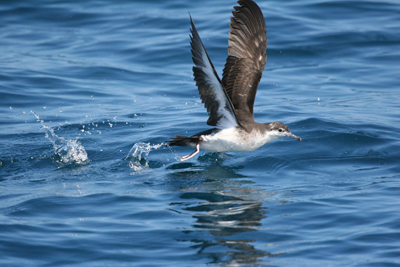CUBAN PROCELLARIIFORMES - Petrels, Shearwaters, Storm Petrels
|
||||||||||||||||||||||||
CUBAN PROCELLARIIFORMES - Petrels, Shearwaters, Storm Petrels
World Status Key |
||||||||||||||||||||||||
| Species |
Sounds |
Occurrence |
|
| Black-capped Petrel - Pterodroma hasitata |
No Audio Available | Year-round | |
| Audubon's Shearwater - Puffinus lherminieri |
Year-round | ||
| Audio Credit: xeno-canto.org Robson Silva e Silva |
|||
| Leach's Storm-petrel - Oceanodroma leucorhoa |
No Audio Available | Non-breeding | |
Additional Information
Key: ![]() Profile
Profile ![]() Photos
Photos ![]() Video
Video ![]() Audio
Audio
Black-capped Petrel - Pterodroma hasitata ![]()
![]()
![]()
![]()
The black-capped petrel is found in ocean waters from North Carolina south through the Caribbean to northern South America.
Source: Arkive Intended Audience: General Reading Level: Middle School
Black-capped Petrel - Pterodroma hasitata ![]()
![]()
![]()
![]()
The black-capped petrel is threatened because it has avery small and fragmented breeding range.
Source:BirdLife International Intended Audience: General Reading Level: Middle School
Audubon's Shearwater - Puffinus lherminieri ![]()
![]()
![]()
![]()
![]()
![]()
![]()
![]()
Audubon's shearwater is found along the Atlantic Coast from New Jersey to Florida into the Gulf Coast and the Caribbean and Central and northern South America.
Source: Arkive Intended Audience: General Reading Level: Middle School
Leach's Storm-petrel - Oceanodroma leucorhoa ![]()
![]()
![]()
![]()
![]()
![]()
![]()
![]()
![]()
![]()
Leach's storm-petrel lives on open ocean waters and breed on islands in the northern Atlantic and Pacific.
Source: Internet Bird Collection Intended Audience: General Reading Level: Middle School

